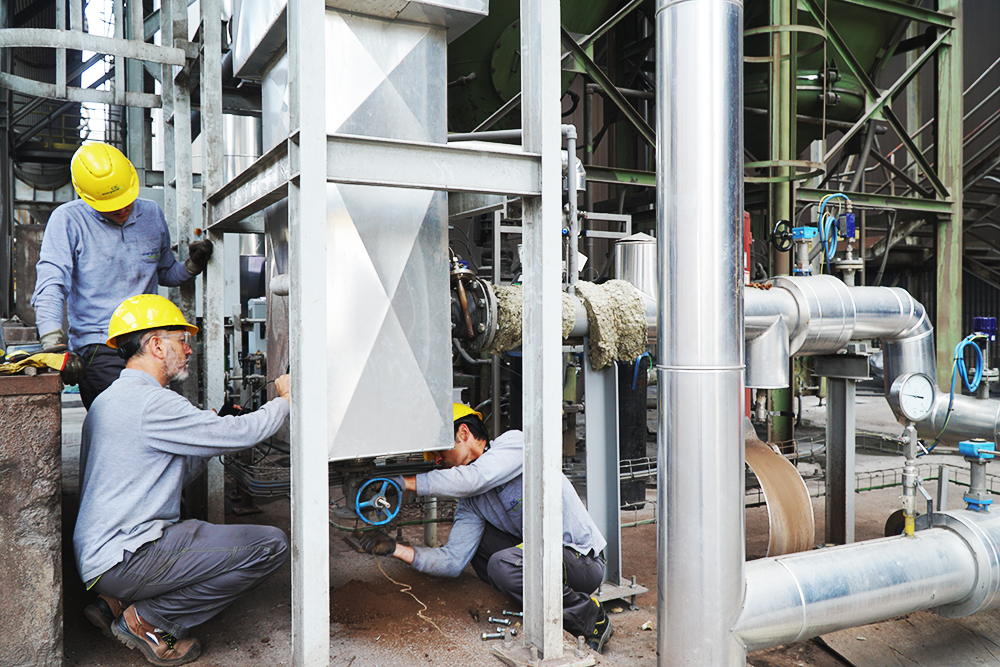The aim is to reduce the industry energy bill providing a cost-effective solution that make possible the recovery of large amount of waste energy to be used on demand. Industry energy bill savings may reach up to 30% while contributing to reach Europe energy efficiency targets.
It is simple, low-cost (5-10 €/kWh), maintenance-free and easy to operate. This technology is based on a packed bed arrange of low-cost solid particles, where to carry out the charging and discharging operations of the storage, the heat is exchanged directly between the waste heat stream and the solid particles as sensible heat, increasing or decreasing the temperature of the solid particles. Both the development of an appropriate solid filler material and the optimal design of the system by fluidynamic modelling are the secret.
More than 10 years ago, CIC energiGUNE initiated an intensive research activity in thermal energy storage for industrial heat processes to make the recovery of industrial waste heat a competitive solution. The activity comprised a deep research on materials, fluid-dynamic modelling and engineering, within several European and industrial projects such as ORC-Plus and ReSlag. This work led to the successful commissioning of several real-scale prototypes carried out under the scope of the CIC energiGUNE’s systems engineering group, such as the off-gas waste heat recovery unit commissioned in the world’s leading steel company ArcelorMittal.
Industrial waste heat recovery or recovery of the industrial environmental concern
The necessity of determined actions against the global warming is unquestionable and process industry may play an important role.
The industry sector is responsible of more than one third of the total energy consumption worldwide, with an increasing trend mainly driven by the slight growth of the energy intensive industries (EIIs). EIIs are those industries with the largest carbon footprint and are often represented by: food, pulp and paper, basic chemicals, refining, iron and steel, nonferrous metals (mainly aluminum), and nonmetallic minerals (mainly cement).
The main type of energy end-use among these industries is heat, accounting for 50% of the total worldwide heat consumption, which represents by far the largest energy end-use type.
On the supply side, nowadays heat production means are clearly dominated by fossil fuels, but worst of all, is that once the heat finishes its mission in an industrial process, somewhere between 20 to 50% of the energy input is lost as waste heat. Hot exhaust gases, cooling water streams or free heat losses from incandescent surfaces are widespread examples of a free-of-charge contribution to increase the exergy of the universe.
Furthermore, most of the times, even more energy is fed into the process to cool down the waste hot source, since the temperature is too high to be released directly to the atmosphere.
One may easily conclude that industrial heat use is the least and worst efficient way of using energy, but it would be a not very precise conclusion. The inefficiencies belong to a whimsical scenario where burning fossil fuels still became cheaper than recovering and reusing the excess of the so-called waste heat.
Nevertheless, the rules of the game are changing fast, primarily represented by the progress towards phasing out fossil fuels subsidies, whilst energy efficiency subsidies keep increasing.
The contribution of these policies, in addition to the technology development, are reaching to a point where the return of investment of a solution to recover and reuse waste heat may claim the interest of the financial managers, since it is becoming a reliable investment.













